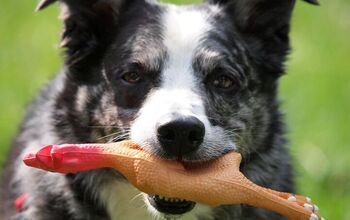Dogs Trained to Detect Ancient Remains Expedite Search for Graves

Canada’s recent discovery of hundreds of tiny unmarked graves attributed to the residential school system has created not only cross-country outrage but also a determination to locate and repatriate the remains of all children who left home to attend these schools but never returned.
Within a few weeks, the number of unmarked graves throughout Canada had quickly grown to over 10,000 and the ability to locate and identify additional sites (that would date back decades), had become almost impossible. Particularly since many of the schools had since been razed and pinpointing potential burial areas leaned heavily toward guesswork.
The search had to be done respectfully – meaning without the use of large, excavation equipment – however, the need to cover a vast range of land in a timely manner was a challenge.
That’s when the search teams decided to bring in the dogs.
Part of the Ottawa Valley Search and Rescue Dog Association, German Shepherds, Recce and Taz are proficient in detecting older, archeological remains with drill work that has included using older cemeteries as their training ground. In fact, Historic Human Remains Detection Dogs have been used throughout North America and Europe to identify human remains in archaeological sites that date back hundreds of years… and longer. These dogs can pick up on the much lower scent levels that come from teeth and bones found in ancient graves… and some are even explicitly trained to detect cremated remains where no bones or teeth remain.
This switch from bulldozers to the canine duo is a change welcomed by the area’s former residential school students who feel that because dogs have always been part of the Indigenous culture, they offer a natural, more appropriate approach to finding the missing children.
According to Archaeology Professor Adrian Burke, dogs make a great option because they are non-invasive. Although it’s not an exact science – they can’t pinpoint an individual grave - they can hone in on a location and this saves time and the need for random digging. Once dogs flag a site, Ground Penetrating Radar (GPR) is used to confirm what lies beneath.
By adding Recce and Taz to the search teams, it’s estimated the time needed to cover a couple of acres can be reduced from a few weeks to just a couple of days.
While the process is still slow and time-consuming, Indigenous residents confirm it’s about the children’s families understanding what happened to their little ones, being able to bring them home for appropriate burial, and ultimately experiencing a sense of closure and justice.

Sharing space with three seriously judgy Schnoodles and a feline who prefers to be left alone. #LivingMyBestLife
More by Mary Simpson























